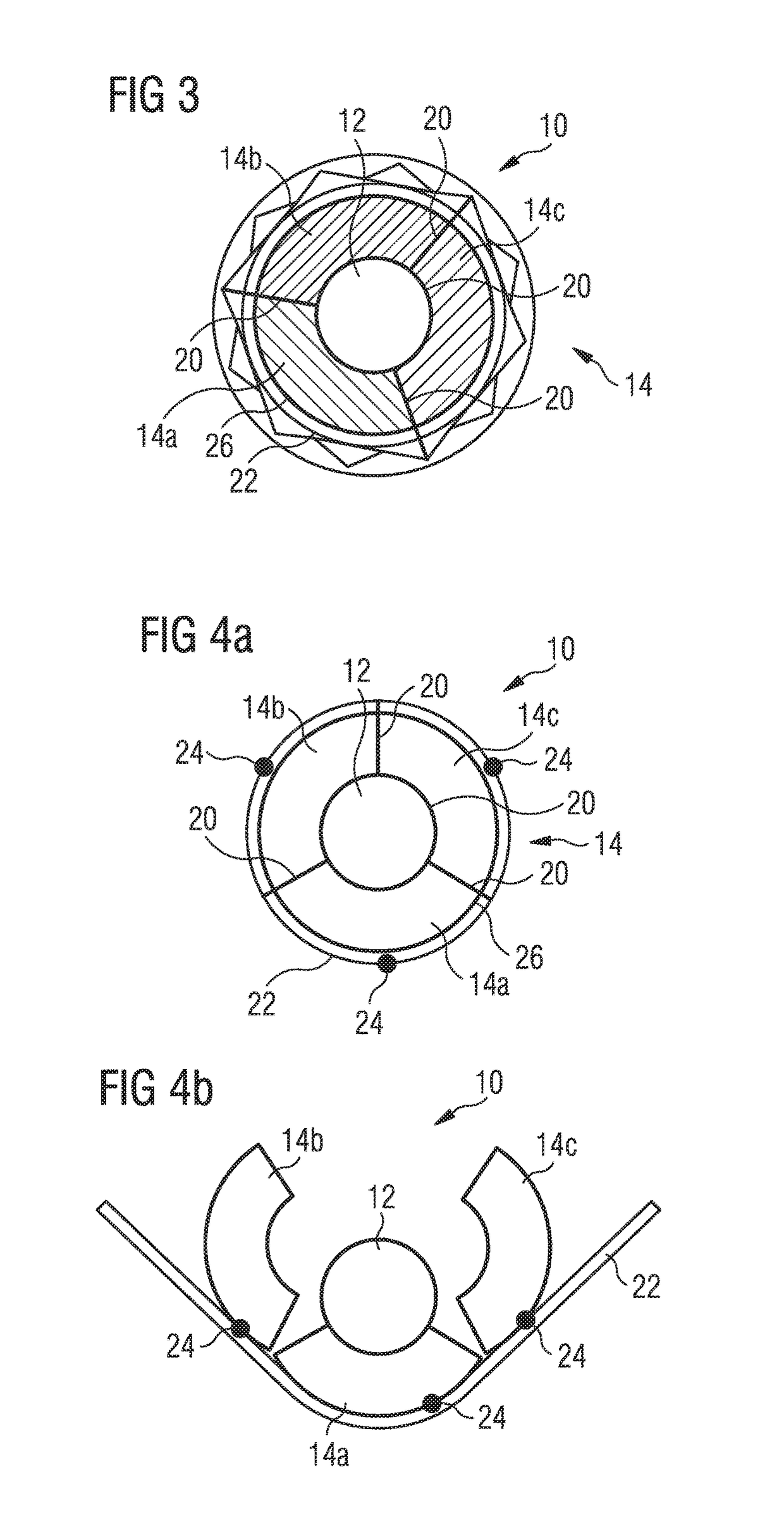Thermally fragmentable fastening device
a fastening device and thermal fragment technology, applied in the direction of screw, cosmonautic components, break-bolts, etc., can solve the problems of induced fragmentation the connection between the head and the shaft of the fastening device loses its strength, and the fastening device loses its integrity and thus its fastening function, so as to facilitate the fragmentation of spacecraft structures and low cost
- Summary
- Abstract
- Description
- Claims
- Application Information
AI Technical Summary
Benefits of technology
Problems solved by technology
Method used
Image
Examples
Embodiment Construction
[0029]A fastening device 10 shown in FIGS. 1 to 4, which is provided for use in a spacecraft, comprises a shaft 12 and a head 14. In the embodiment shown here, the fastening device 10 is formed in the form of a bolt. The shaft 12 is therefore provided with an outer thread 16 in the area of its end lying opposite the head 14. The head 14 of the fastening device 10 is formed in multiple parts and here comprises three head segments 14a, 14b, 14c, which are formed symmetrically and enclose the circular cylindrical shaft 12. A hollow cylinder is thus defined by the three head segments 14a, 14b, 14c with an opening in which the shaft 12 is taken up. In the area of its end connected to the head 14, the shaft 12 has an area 18 with an enlarged outer diameter. In the embodiment of the fastening device 10 shown in the figures, this area 18 is formed with an enlarged outer diameter in the form of a spherical cap.
[0030]The head 14, i.e., the head segments 14a, 14b, 14c are connected by a first ...
PUM
 Login to View More
Login to View More Abstract
Description
Claims
Application Information
 Login to View More
Login to View More - R&D
- Intellectual Property
- Life Sciences
- Materials
- Tech Scout
- Unparalleled Data Quality
- Higher Quality Content
- 60% Fewer Hallucinations
Browse by: Latest US Patents, China's latest patents, Technical Efficacy Thesaurus, Application Domain, Technology Topic, Popular Technical Reports.
© 2025 PatSnap. All rights reserved.Legal|Privacy policy|Modern Slavery Act Transparency Statement|Sitemap|About US| Contact US: help@patsnap.com



